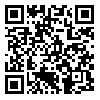BibTeX | RIS | EndNote | Medlars | ProCite | Reference Manager | RefWorks
Send citation to:
URL: http://ijpcp.iums.ac.ir/article-1-1963-en.html
2- Ph.D. in Psychiatric Rehabilitation
Objectives : since the symptoms of obsessive-compulsive disorder are basically culture-bound, identification and classification of the various kinds of symptoms prevalent among obsessive-compulsive patients have clinical significance. Better identification of symptoms of obsession among Iranian patients will result in quick and timely diagnosis of the disorder. Further, it will be useful in differential diagnosis and therapeutic interventions. Method: 56 obsessive-compulsive patients from Tehran Psychiatric Institute outpatient clinic, Shahid Esmaili Hospital and private offices were selected through available sampling. In order to make accurate diagnosis of the patients, the obsessive-compulsive diagnostic checklist was used. The symptoms and the intensity of obsessive-compulsive behaviors were assessed by the Yale-Brown obsessive-compulsive Scale. Findings: the most prevalent symptoms of obsession were related to contamination, religious concerns, washing, cleaning, repetitive acts and rechecking. The symptoms of saving and storing up were least prevalent. Furthermore, the study demonstrated that the age of onset of the disorder was higher for females as compared to males. The intensity of the symptoms was greater among the patients who had suffered from the disorder for more than 5 years.
Received: 2013/07/13 | Published: 2001/09/15
| Rights and permissions | |
 |
This work is licensed under a Creative Commons Attribution-NonCommercial 4.0 International License. |



